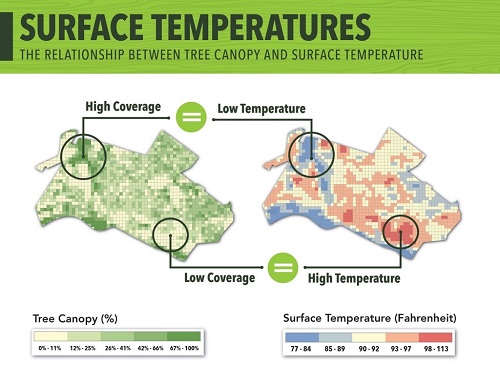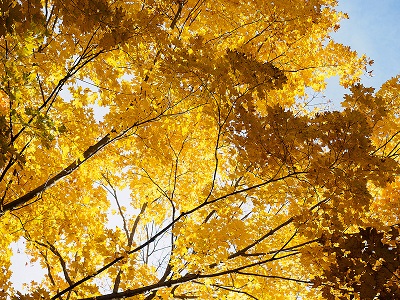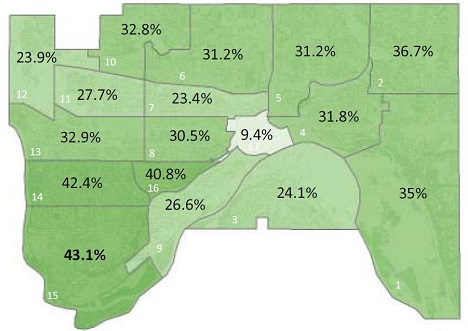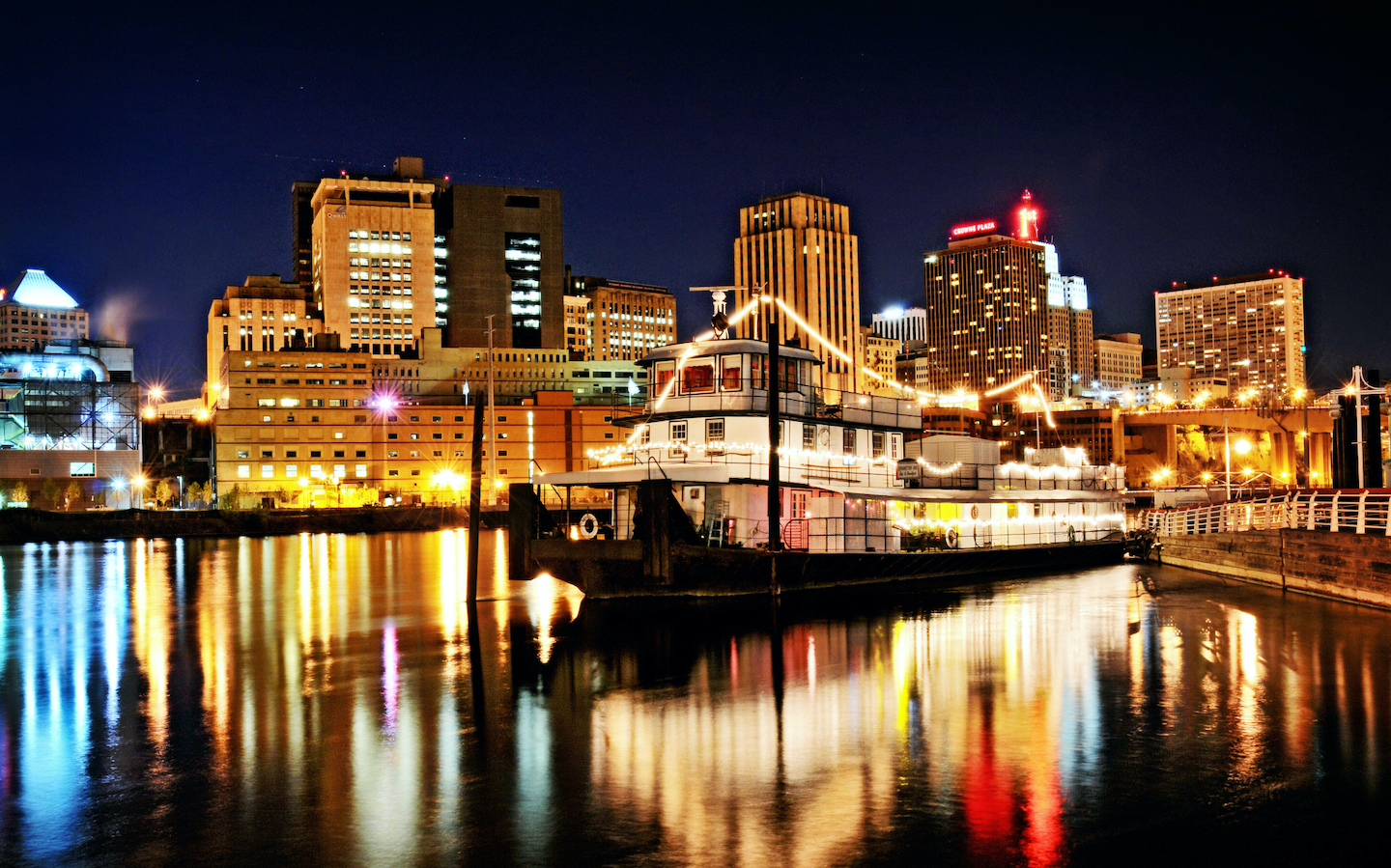The Best Time to Plant a Tree Is 20 Years Ago. The Second Best Time Is Now. — Proverb

The urban forest provides habitat for wildlife and many benefits to the human community. The tree leaves and branches of the urban forest compose the tree canopy. Trees cool the air by casting shade and through evapotranspiration. Because buildings, roads, and other infrastructure have replaced vegetation in cities, the tree canopy is less dense than in non-urban forested areas. City rooftops and hard surfaces absorb the sun’s energy and release it, creating an “island” of warmer temperatures. As a result, temperatures are higher in cities due to the urban heat island effect.
The urban heat island effect has negative effects on the people of Saint Paul. The extra heat increases air pollution, and it makes summer heat waves more intense.
Trees Help Keep Us Healthy

Two key air pollutants that can trigger asthma — ozone and particulate matter — are removed from the air by trees. The larger the tree, the more effective it is at removing air pollution. Another way trees improve human health is by reducing stress levels. Hospital patients who can see trees through their windows recover much faster than patients without these views.
Trees Can Prevent Water Pollution

A tree’s roots play a role in keeping water clean, too. When it rains, water runs off paved surfaces and carries pollutants through the storm drain system to the nearest body of water. Tree roots can soak up stormwater, reducing the amount of runoff and preventing pollution from entering lakes and rivers. Tree roots hold the soil and prevent erosion as well. Trees are not universally good for water quality, however. Tree leaves that fall on hard surfaces often pass through the storm drain system and enter rivers and lakes. They overload these water bodies with nutrients such as phosphorous, causing algae blooms and other imbalances. Raking leaves off hard surfaces like roads and sidewalks and composting them protects water quality.
Unfortunately, the tree canopy is often unevenly distributed in cities, including in Saint Paul. Research has shown that renters, people of color, and people with low incomes tend to have less canopy cover in their neighborhoods. This inequality has negative consequences on health, finances, environmental quality, and quality of life.
Photos
- Surface Temperature Diagram. Image: Jarlath O’Neil-Dunne
- Tree canopy. Photo: Michael Janke / CC BY-NC-ND
- Canopy percentage. Image: City of Saint Paul
